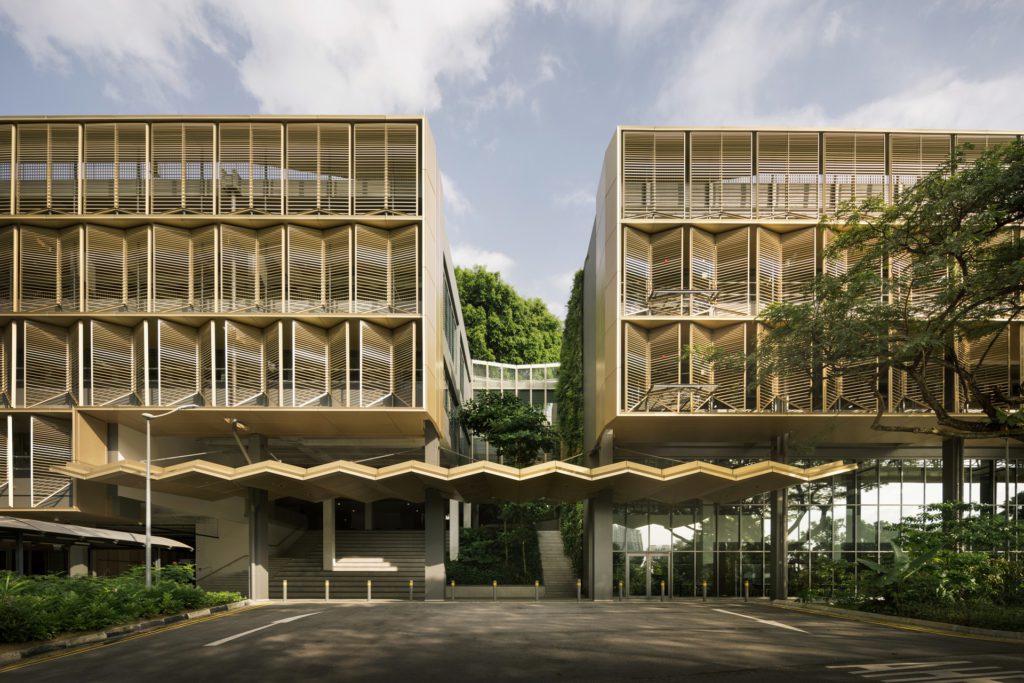Retrofitted SDE1 & 3 at National University of Singapore (NUS) to open in February
31 JANUARY 2023 – As part of a larger campus redevelopment to meet net zero carbon targets, National University of Singapore (NUS)’s renovated School of Design and Environment (SDE) 1 and 3 will be opened this February. Alongside SDE4 as Singapore’s first new-build net-zero energy building that was opened in 2019, the new SDE1 and 3 is set to become NUS’s living lab in driving resilient solutions.


SDE1 and 3 adapts upon a structure that was originally built in the 1970s, implementing super-low carbon and net zero energy standards. The climate-responsive renovation includes more than 23,000 square metres of design studio space, maker spaces, workshops and research centres, a 1000-square-metre open loggia, exhibition galleries, shared and faculty offices, alongside various public and social spaces.
Located close to Singapore’s southern coast, the building integrates principles of vernacular tropical architecture. Its extended west façade with a new “deep veil” is designed as an equatorial envelope to screen the building against heat gain. The structure integrates light shelves, which can drive daylight into the studio spaces through clerestory windows positioned along an inner window wall.


Considering its users are students of design, architecture and engineering, the building was also envisioned as a pedagogical tool. Erik L’Heureux, Associate Professor and Design Lead, said: “The transformation of SDE 1 and 3 offers an encapsulation of the future of architectural education in Singapore; an ethos of subtracting rather than adding, conserving rather than demolishing, of relying on natural ventilation rather than air conditioning, and creating design quality rather than prioritizing on real estate quantity.”


More than 65 per cent of the total area will be hybrid cooled with tempered air or naturally ventilated, with most of the rooms’ windows being openable to prevailing breezes. This allows the building’s projected total energy consumption to be one-third of pre-renovation levels. The building is on track to achieve net zero carbon over its lifecycle due to the low embodied carbon footprint—estimated to be less than a third of a similar new construction—and predicted net positive energy performance.
Related stories:
Commentary: Singapore Zero Energy Cases

Opening of SDE4, an inventive educational architecture

‘Everything Anywhere’ Echo: TU Delft’s adaptable, positive energy building

Sign up for FuturArc Prize 2023: Cross-Generational Architecture and win cash prizes! Register from FuturArc App; download now from App Store or Play Store!

